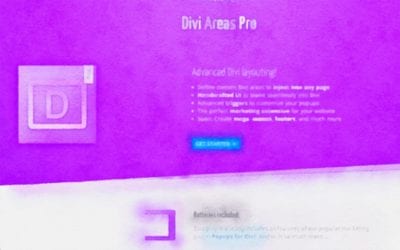Popups have become a popular tool for website owners to engage with their visitors and drive conversions.
However, with so many different types, sizes, and dimensions available, choosing the right one for your website can be overwhelming.
In this comprehensive guide, we will explore various popup types and provide insights into their sizes and dimensions.
By the end of this article, you’ll have a clear understanding of which popups will work best for your Divi website and how to optimize them for maximum impact.
Table of Contents
- FAQs About Popup Sizes
- What are Popups?
- Common Popup Types
- Choosing the Right Popup Size
- Popup Dimensions Best Practices
- Optimizing Popups for Search Engines
- How Can We Help
- Best Practices for Popup Usage
- Conclusion
FAQs About Popup Sizes
What is the ideal size for a popup?
The ideal size for a popup depends on various factors, including your website design, content, and target audience.
However, a commonly recommended size is around 400-600 pixels wide and 300-800 pixels tall.
It’s important to ensure that your popup is large enough to display your message effectively without being overly intrusive.
Should I make my popup responsive?
Yes, it is highly recommended to make your popups responsive. With the increasing use of mobile devices, it’s crucial to ensure that your popups adapt to different screen sizes and resolutions.
Responsive popups adjust their dimensions and layout based on the device being used, providing a seamless user experience across desktop, tablet, and mobile.
Can I customize the size of my popups?
Yes, most popup plugins and tools offer customization options for popup sizes. You can typically adjust the width, height, and overall dimensions of your popups to fit your specific requirements.
It’s essential to strike a balance between the size of the popup and the content it contains, ensuring it is visually appealing and effectively conveys your message.
Are there any guidelines for popup dimensions in terms of file size?
While there are no specific guidelines for popup dimensions in terms of file size, it is advisable to keep the file size of your popups as small as possible without compromising image quality.
Large file sizes can lead to slower loading times, which can negatively impact user experience and page load speed. Optimize your popup images and consider using file compression techniques to minimize the file size.
How can I test the effectiveness of different popup sizes and dimensions?
A/B testing is an effective way to measure the impact of different popup sizes and dimensions.
Create multiple versions of your popups with varying sizes and dimensions, and test them against each other to determine which performs better in terms of user engagement, conversions, and overall goals.
Analyze the data and insights obtained from the tests to make informed decisions about optimizing your popup sizes and dimensions.
What are Popups?
Popups are graphical user interface elements that appear on top of a webpage to capture the user’s attention or prompt action.
They typically overlay the existing content and can be used for various purposes, such as displaying special offers, collecting email addresses, promoting new products, or guiding users through a conversion funnel.
Common Popup Types
There are various types of popups available, each serving a different purpose. Let’s explore some of the most popular ones:
Entry Popups
Entry popups appear immediately after a user lands on a webpage. They are effective in grabbing attention and presenting a compelling offer or message to visitors from the moment they arrive.
Exit Intent Popups
Exit intent popups detect when a user is about to leave a website and display a targeted message or offer to encourage them to stay. These popups can be highly effective in reducing bounce rates and recovering potentially lost conversions.
Scroll Popups
Scroll popups appear when a user scrolls to a certain point on a webpage. They can be used to present additional information, offers, or calls to action at a specific moment, increasing the chances of engagement and conversions.
Timed Popups
Timed popups are triggered after a certain amount of time spent on a webpage. They are useful for delivering offers or messages when users have had enough time to engage with the content and are more likely to take action.
Click-Triggered Popups
Click-triggered popups are activated when a user clicks on a specific element, such as a button, link, or image. These popups are great for presenting additional information, product details, or subscription forms related to the clicked element.
Choosing the Right Popup Size
Selecting the appropriate size for your popups is crucial to ensure they are visually appealing and properly displayed on various devices.
While there is no one-size-fits-all answer, considering the following factors can help you make an informed decision:
→ Content: The size of your popup should accommodate the content you want to display. If you have a lot of text, images, or videos, you’ll need a larger size to ensure everything is legible and visually appealing.
→ Placement: Consider where you want to position the popup on your webpage. If it’s a full-screen overlay or a sticky bar, the size will be different compared to a slide-in or embedded popup.
→ User Experience: Strike a balance between grabbing attention and providing a positive user experience. Avoid overly large popups that dominate the screen or obstruct the content, as they can annoy users and lead to high bounce rates.
Popup Dimensions Best Practices
When it comes to popup dimensions, it’s essential to consider both desktop and mobile devices. Here are some recommended dimensions and best practices for each:
Desktop Dimensions
→ Full-Screen Overlays: Aim for dimensions around 800px to 1200px in width and 600px to 900px in height. This size ensures the popup is prominent without overwhelming the entire screen.
→ Slide-in and Embedded Popups: Choose a width of approximately 300px to 500px and a height that complements your content. This size allows the popup to grab attention without disrupting the overall layout.
→ Sticky Bars: Opt for a height of around 30px to 60px and a width that matches your website’s layout. Sticky bars are meant to be unobtrusive yet visible enough to capture attention.
Mobile Dimensions
With the increasing popularity of mobile browsing, it’s crucial to optimize your popups for smaller screens. Consider the following dimensions and best practices for mobile devices:
→ Full-Screen Overlays: Aim for dimensions around 320px to 480px in width and 480px to 800px in height. Ensure the popup scales well and remains legible on smaller screens.
→ Slide-in and Embedded Popups: Choose a width of approximately 250px to 350px to fit within the narrower mobile screen dimensions. Adjust the height accordingly to maintain a visually appealing design.
→ Sticky Bars: Opt for a height of around 30px to 50px to minimize intrusiveness on mobile screens. Adjust the width to fit within the narrower layout.
Optimizing Popups for Search Engines
To ensure your popups have the best chance of ranking well in search engine results, consider the following optimization techniques:
Relevant and Engaging Content
Craft compelling popup content that aligns with the needs and interests of your target audience. Provide valuable information, incentives, or offers that encourage users to take action.
Proper Keyword Placement
Incorporate relevant keywords naturally within your popup content, including the headline, body text, and call-to-action. However, avoid keyword stuffing, as it can negatively impact user experience and search rankings.
Descriptive Meta Tags
Optimize the meta title and meta description tags of your popup page to accurately reflect the content and entice users to click. Use relevant keywords while maintaining a concise and compelling description.
Responsive and Mobile-Friendly Design
Ensure your popups are designed to be responsive and mobile-friendly. Google prioritizes mobile-friendly websites, so having mobile-optimized popups can positively impact your search rankings.
Fast Loading Speeds
Optimize your popup elements, images, and scripts to ensure fast loading speeds. Slow-loading popups can lead to higher bounce rates and negatively affect your search rankings. For Divi users: you can speed up Divi with this handy tutorial.
User-Friendly Navigation
Make sure your popups have clear and intuitive navigation. Users should easily understand how to close the popup or proceed with the desired action. This improves the overall user experience and helps with search rankings.
How Can We Help
Experience the full potential of your Divi website with Divi Areas Pro, the leading Divi popup plugin! Inspired by Divi Overlays, the original Divi Popup plugin, Divi Areas Pro is the most robust marketing plugin available for Divi!
Our solution empowers you to effortlessly transform any Divi section into a module that drives conversions or a captivating popup, propelling your online campaigns to greater success.
From attention-grabbing popups and eye-catching fly-ins to dynamic hovers, impressive mega menus, and personalized inline content, the possibilities are boundless!
Now, you have complete control over when and how each Area appears, allowing you to finely tune triggers to perfection.
Whether you prefer displaying your content after a few seconds, upon scrolling down, when visitors are about to leave, by hovering over a specific element, or through custom JavaScript triggers, Divi Areas Pro has got you covered.
Don’t hesitate any longer to elevate your Divi website to new heights. Begin harnessing the power of DiviMode today and witness remarkable improvements in your conversion rates.

Try Divi Areas Pro today
Sounds interesting? Learn more about Divi Areas Pro and download your copy now!
Many pre-designed layouts. Automated triggers. No coding.
Click here for more details
Best Practices for Popup Usage
To ensure a positive user experience and maximize the effectiveness of your popups, follow these best practices:
- Display popups strategically and avoid excessive use to prevent annoying visitors.
- Use clear and concise messaging to communicate your offer or message effectively.
- Provide an easy and obvious way to close the popup for users who aren’t interested.
- Use engaging visuals and compelling copy to capture attention and drive conversions.
- Segment your audience to deliver targeted and personalized popups based on user behavior and preferences.
- Monitor and analyze your popup performance regularly to identify areas for improvement.
Conclusion
Popups are powerful tools for engaging visitors, capturing leads, and driving conversions on your website.
By understanding the various types and dimensions available, you can choose the right popups that align with your goals and cater to your audience.
Remember to optimize your popups with responsive design and user-friendly navigation.
With the right strategy, plugin, and implementation, your popups can effectively outrank competitors and deliver exceptional results for your website.

Try Divi Areas Pro today
Sounds interesting? Learn more about Divi Areas Pro and download your copy now!
Many pre-designed layouts. Automated triggers. No coding.
Click here for more details






